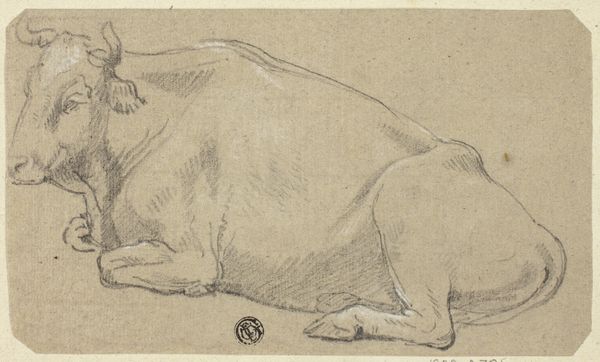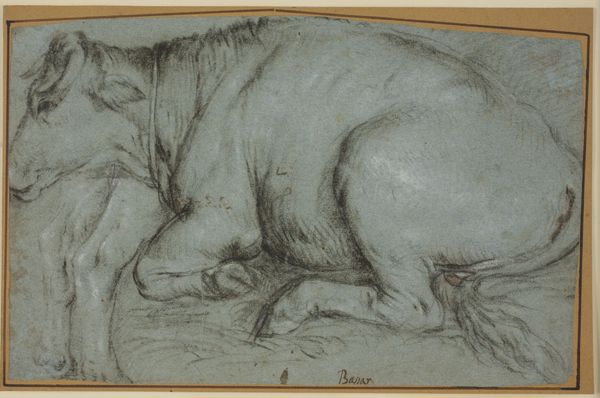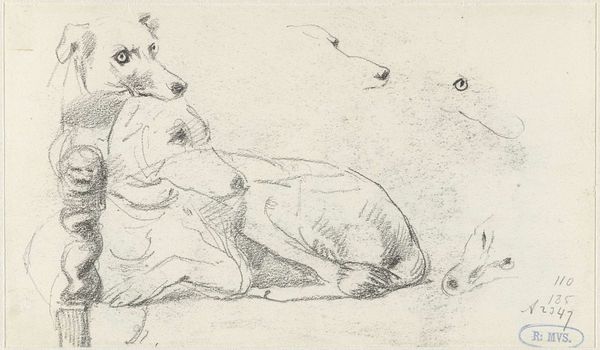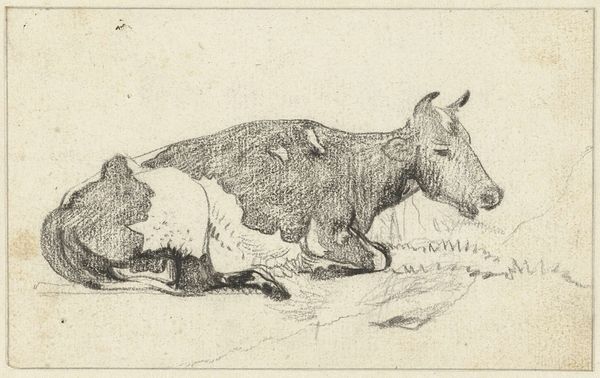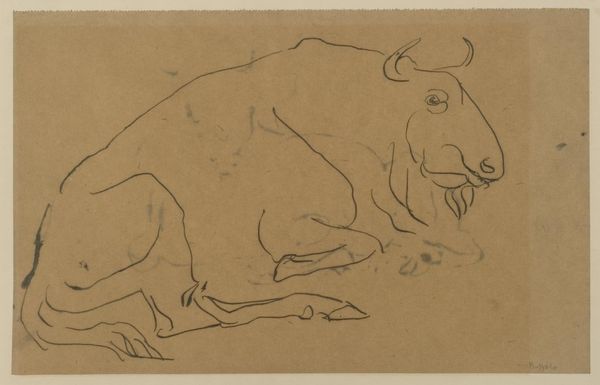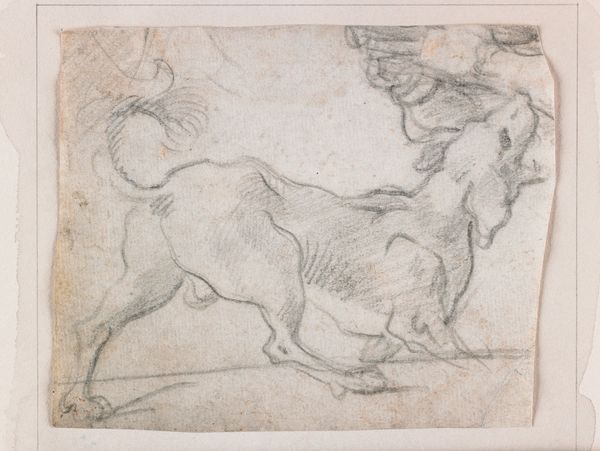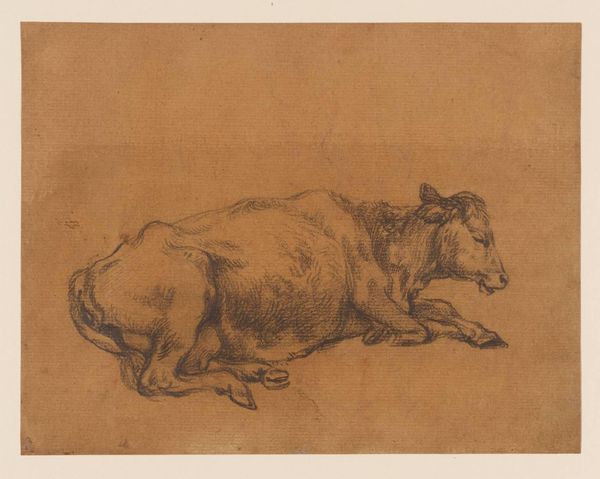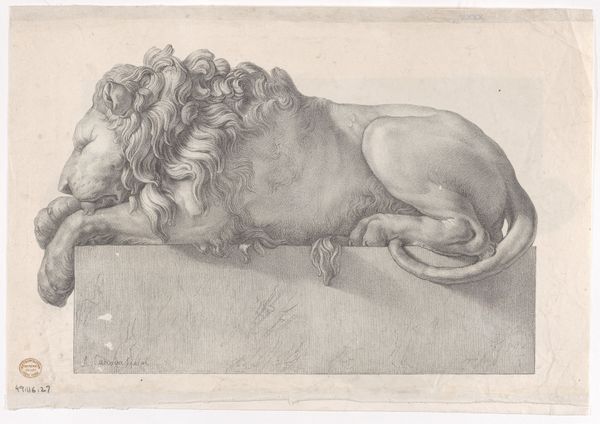
drawing, print, paper, pencil, chalk, graphite, black-chalk
#
portrait
#
pencil drawn
#
drawing
# print
#
landscape
#
paper
#
pencil drawing
#
pencil
#
chalk
#
graphite
#
black-chalk
#
realism
Dimensions: 175 × 299 mm
Copyright: Public Domain
Editor: This is "Cow" by Franz Kobell, created sometime between 1769 and 1822. It's a drawing, mainly in pencil, on paper, and it’s currently at the Art Institute of Chicago. It looks very realistic to me, even charming, in its simplicity. What do you see in this piece, looking at it from a historical perspective? Curator: Charm is certainly present, but I’m drawn to the socio-economic implications of depicting a cow at this time. Consider the rise of agrarian capitalism in the late 18th and early 19th centuries. Cattle were no longer simply livestock; they became capital, tied to notions of property and agricultural production. Kobell’s “Cow” reflects these changing relationships between humans, animals, and the land. Does this perspective resonate with you? Editor: It does, now that you mention it. Seeing it as just a portrait seemed incomplete. It makes me wonder about land ownership and how artists visualized these power dynamics. The cow is almost a symbol, not just an animal. Curator: Precisely! And consider how artistic representation itself was evolving. Realism, as you noted, becomes a way to document and, in a sense, legitimize the "value" of this animal, a crucial asset. The medium, a drawing, usually a preparatory medium for a larger painting or print, what does that say about Kobell’s perception and intention with this subject? Editor: So it's a reflection of the changing agricultural landscape and the way animals were becoming commodified. I suppose seeing it simply as a ‘portrait’ overlooks the economic realities it subtly embodies. It prompts me to question my own assumptions about art's purpose in different eras. Curator: Indeed. Engaging with art involves confronting these complexities, acknowledging the layers of meaning embedded within seemingly simple depictions. It’s a good reminder to consider power structures behind even pastoral images.
Comments
No comments
Be the first to comment and join the conversation on the ultimate creative platform.
